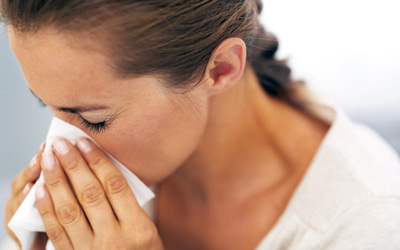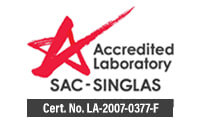
Managing Allergic Diseases is the First Step Towards Healthy Indoor Environments
Taking steps to reduce indoor air pollution and maintaining a healthy environment in your home or office is the best defense against allergic diseases including chronic rhinosinusitis and asthma.
Singaporeans spend about 90 percent of their time indoors, encountering a broad range of air pollutants as they travel through a variety of indoor environments in the course of their daily activities.
Indoor levels of pollutants may be 2-to-5 times higher than outdoors, and occasionally 100 times higher. This exposure to high levels of pollutants may increase the risk of irritation, allergic sensitization, acute and chronic respiratory disorders, as well as other subtle neurological and behavioral effects.
Common Singapore Indoor contaminant exposures are:
- Biological contaminants: microbial agents, such as molds and bacteria, and their by-products are commonly known as MVOC. (That musty smell in the environment can be a telltale sign of a problem brewing indoors)
- Chemical and particle exposures: formaldehyde, ozone, VOCs, respirable particles, carbon monoxide, and cleaning chemicals. (Many times, the level of exposure to chemicals and particulate increases in enclosed air-conditioned spaces as either there is insufficient (or Zero) dilution of fresh air or the level of off-gassing is high.
- Dust Mites: A major source of indoor allergens responsible for IgE- respiratory illness in Singapore is dust mites. Dust mites produce one of the most significant allergens in your environment.
Dust mites are microscopic, insect-like creatures that live in bedding, carpets, and upholstered furniture. The waste they produce causes allergic symptoms. Pillows and mattresses are a virtual paradise for dust mites because they thrive in warm, humid conditions while surviving on shed human skin cells. Since people spend 8-10 hours a day in the bedroom, it’s where the greatest number of dust mites exist.
Sensitization to dust mite allergen is strongly associated with increased airway responsiveness, eczema, and asthma.
How Are These Pollutants Transported?
When surfaces containing biological growth are disturbed, by-products of this growth become airborne and are dispersed into the environment through the air conditioning systems. They subsequently settle on the indoor furnishing or are inhaled by occupants. These sub-micron sized particles and pollutants are extremely light and can remain airborne for hours.
Managing Indoor Allergens
The steps toward managing indoor allergens are:
-
Allergen Avoidance: Avoidance of offending triggers, whether allergens or irritants, is a critical first step in the management of many diseases.
For example, if you are easily sensitized by dust during house cleaning, use HEPA vacuum cleaners to reduce breathing in the pollutants being thrown out by the vacuum exhausts.
Wearing a face mask when doing activities which generate pollutants or particulates, can help go a long way to reducing the exposure to these pollutants.
If you are easily sensitized by house dust mites or its feces, encase your mattress, and pillows in allergy-proof covers. This will deprive dust mites of a primary food source: your dead skin cells. It also prevents dust mite residue from escaping your bedding and exposing you to it.
-
Increasing fresh air: Our indoor activities may generate or harbour pollutants. Increasing the flow of fresh air can decrease the concentration and exposure time to these environmental pollutants which can sensitize us.
-
Reduce Build-up: Toilets and bathrooms, where ventilation is poor or non-existent, are hosts for the generation and build-up of pollutants can subsequently migrate to adjacent rooms. Installing a simple exhaust fan which gets automatically activated the minute the toilet light is switched on, can go a long way in reducing the humidity and pollutants from spreading into the environment.
-
Avoid the use of harsh or toxic chemicals: Many times, the very same chemicals we use to kill pests or control pollutants can be very toxic to the environment and us. Many of these chemicals will leach into the environment and may not disperse/ evaporate as fast as we want them to. Long-term exposure to such chemicals can trigger reactions in the human immune system subsequently leading to diseases such as MCS, “Multiple Chemicals Sensitivity.”
How Can I Identify What is Causing or Triggering these Problems in Me?
The first step is to identify the source(s) of these contaminants. Many times, the source(s) may not be one and can be a cumulative effect or even multifactorial.
Elimination Process: The best way to identify the problem is to see if there is a trend. Once you have identified the cause, avoid the suspected cause and see if it’s resolved.
For example, if a particular place or a location in the office or home triggers an allergy every time, avoid it. And if you have no choice but to work or live there, have the environment checked by a professional if you can’t locate the source(s). Check if it is only affecting you or all the occupants in general.
Do an Indoor Air Quality Audit
Your office or residence can be professionally screen-tested for indoor allergens. But eliminating these allergens or irritants sooner rather than later can improve the productivity of the workplace and contribute towards a healthier and sustainable environment.
Choose the right Indoor Air Quality (IAQ) Professional
The decision you take on who to choose will help determine the quality of the solutions to your indoor environmental problems. Check the market out and find out the Indoor Air Quality Audit credentials and experience of each service provider you consider. You don’t want someone to just test and give you the results, as many companies can take the data and tell you what you have. You want a professional who must be able to interpret the findings and give you a solution to your problem.


